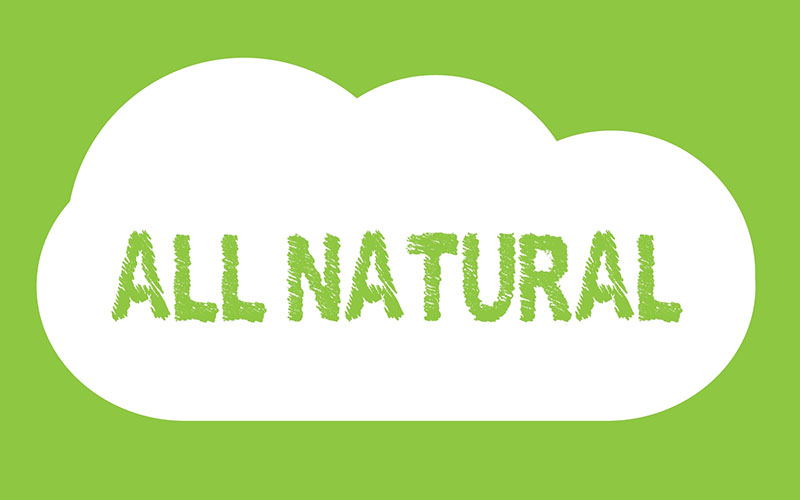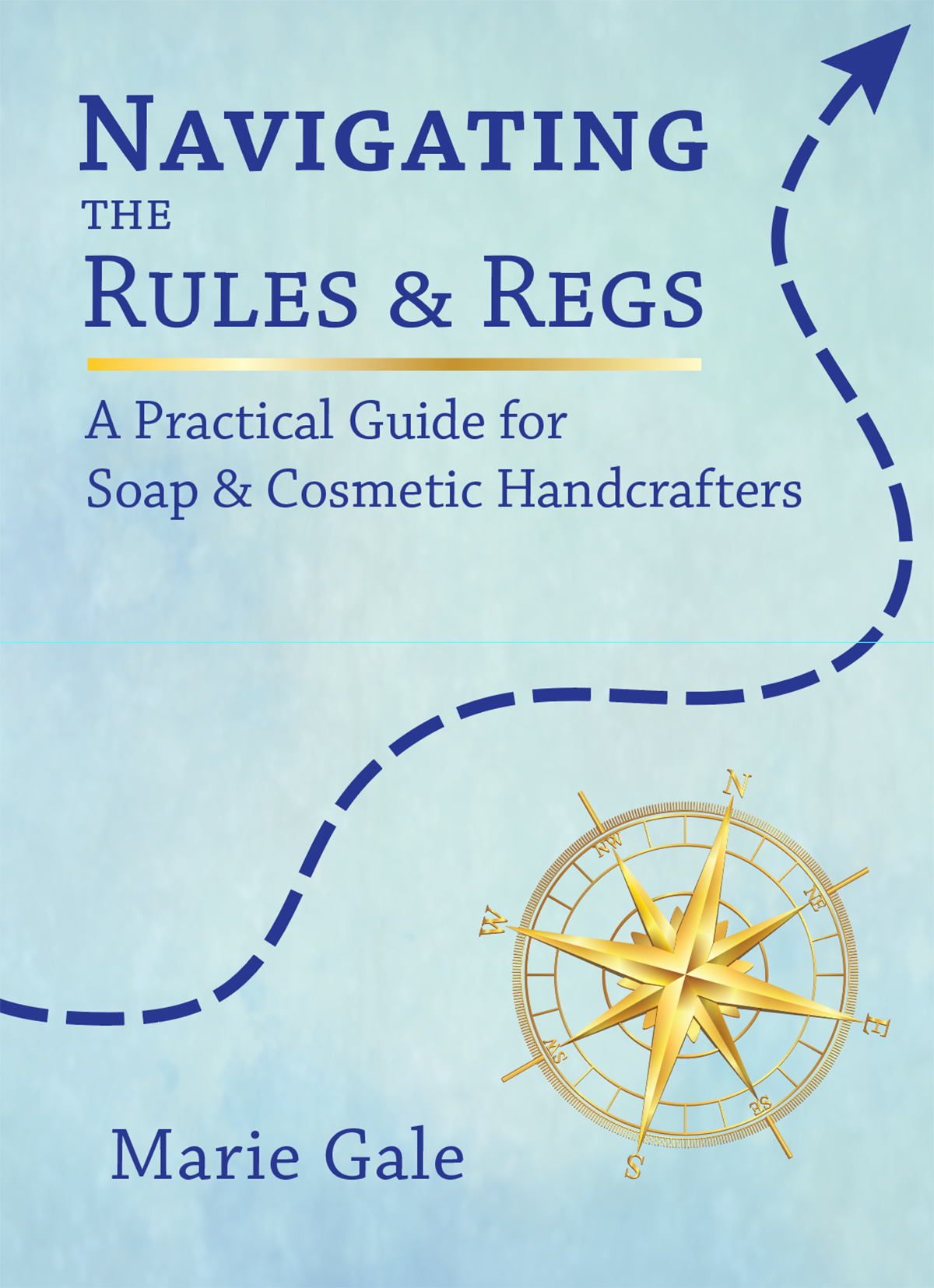As of now (2022) the FDA has declined to provide a formal regulatory definition of the term “natural” as applied to cosmetics (or food). That said, there are some standards that can guide you concerning when the claim of “natural” is appropriate (that is, not false or deceptive) for a cosmetic product.
FDA – Food
While there is no FDA regulatory definition for “natural” as applied to food, the FDA has stated their policy regarding the use of “natural” on food labeling, which is:
Directly from the regulations:
“Nothing artificial or synthetic (including all color additives regardless of source) has been included in or has been added to, a food that would not normally be expected to be in the food.”
58 FR 2407
There is, in regulation, a definition of an “artificial flavor” which is:
Directly from the regulations:
“…any substance, the function of which is to impart flavor, which is not derived from a spice, fruit or fruit juice, vegetable or vegetable juice, edible yeast, herb, bark, bud, root, leaf or similar plant material, meat, fish, poultry, eggs, dairy products, or fermentation products thereof.
21 CFR 101.22(a)(1)
There is also regulation which defines a “natural flavor” which is:
Directly from the regulations:
“…the essential oil, oleoresin, essence or extractive, protein hydrolysate, distillate, or any product of roasting, heating or enzymolysis, which contains the flavoring constituents derived from a spice, fruit or fruit juice, vegetable or vegetable juice, edible yeast, herb, bark, bud, root, leaf or similar plant material, meat, seafood, poultry, eggs, dairy products, or fermentation products thereof, whose significant function in food is flavoring rather than nutritional.”
21 CFR 101.22(a)(3)
In other words, for food flavoring, something is artificial if it’s not derived from a plant or animal, and something is natural if it comes from a plant or animal. It’s possible to intuit from that a definition of “natural,” but it is not actually covered in the regulations.
FDA – Cosmetics
There is even less guidance from the FDA on what would be considered a natural cosmetic or even a natural ingredient in a cosmetic.1
There have been several class action lawsuits (a number of which are still ongoing) where consumers have alleged that they have been misled by false and deceptive advertising or labeling stating that a cosmetic product is “natural.” In one such case, Dr. Linda M. Katz, the Director of the FDA’s Office of Cosmetics and Colors, responded in March 2013 to a request for clarification, making key statements in her letter including the following:2
From the Director of the FDA’s
Office of Cosmetics and Colors
- “making the requested determination without adequate public participation would not be in keeping with FDA’s commitment to the principles of openness and transparency.”
- “priority cosmetic public health and safety matters are currently fully occupying the resources that FDA has available for proceedings on cosmetics matters.”
- “proceedings to define ‘natural’ do not fit within [the agency’s] current health and safety priorities.”
Linda M. Katz
In other words, defining “natural” is a major undertaking which requires public participation and wasn’t a priority in 2013. Since that time, there has been no perceptible change in the FDA’s stance.
In 2019, Rep. Malony (D-NY) introduced HR 5017, the Natural Cosmetic Act.3 It proposed to amend the Food, Drug and Cosmetic Act to provide a definition of “natural” and to make any cosmetic that claimed “natural” but did not meet the definition a misbranded cosmetic (and therefore illegal). The bill died at the end of the legislative session.
FTC – False Claims of “Natural”
The FDA doesn’t regulate the term “natural” for cosmetics, but the Federal Trade Commission has taken action against deceptive claims of “all natural” cosmetics under their authority over “truth in advertising” and deceptive practices in business.
In 2016, the FTC issued complaints against 5 companies,4 alleging that they had made false claims that their products were “all natural” or “100% natural” when they actually contained synthetic ingredients.5 Final orders barred the companies from making false “all-natural” claims.
Natural Products Association “Natural” Standards
The Natural Products Association has developed a Natural Certification Standard for Personal Care Products. In brief, the main criteria are:
- Product must be made up of at least 95 percent truly natural ingredients or ingredients that are derived from natural sources, excluding water
- No ingredients with any suspected human health risks
- No processes that significantly or adversely alter the natural ingredients
- Ingredients that come from a purposeful, natural source (flora, fauna, mineral)
- Processes that are minimal and don’t use synthetic/harsh chemicals
- Non-natural ingredients only when no viable natural alternative ingredients are available and only when there are absolutely no suspected potential human health risks
The NPA provides a list of acceptable ingredients.6 Per the application form, there is a fee of $600 – $3,000 per formulation for certification by the Natural Products Association.7
International Standard for Natural Cosmetic Ingredients & Products
The International Standards Organization (ISO) has issued an international standard for natural and organic cosmetic ingredients and products: ISO 16128, Guidelines on technical definitions and criteria for natural and organic cosmetic ingredients and products. It was issued in two parts, Part 1 (16128-1) Definitions for ingredients and Part 2 (16128-2) Criteria for ingredients and products. The standard can be purchased here.
Natural Ingredients
Part 1 defines natural cosmetic ingredients as ingredients obtained only from plants, animals, micro-organisms or minerals by physical processes (e.g., grinding, drying, distillation), fermentation reactions occurring in nature and leading to molecules which occur in nature and other traditional procedures (e.g., extraction using water or other natural solvents).8 Water is considered a natural ingredient.
Derived Natural Ingredients
Also defined in part 1 is a derived natural ingredient. It is one that has greater than 50% natural origin, but has been modified by defined chemical and/or biological processes. The allowed processes that might be used by smaller soap and cosmetic manufacturers include carbonation, hydrolysis, reduction, and saponification.9
Natural Cosmetic Product
Part 2 of the standard defines how to calculate the percentages of natural or natural-derived ingredients in order to determine if a product can be considered “natural” or naturally derived. It contains a LOT of mathematical formulas to work out the percentage of natural components in the final product.
Best Practice
If you want to document that your cosmetic ingredients and/or products meet an established standard for “natural” or “natural derived,” the ISO standard is probably your best bet.
See also my previous blog post from 2016: ISO Issues Natural and Organic Cosmetic Guidelines
- FDA Small Business Cosmetic FAQ Q7 ↩︎
- Astiana v. Hain Celestial Grp., Inc., 783 F.3d 753, 759-60 (9th Cir. 2015) ↩︎
- HR 5017 (2020) ↩︎
- FTC Approves Four Final Orders Barring Companies from Making False All-Natural Claims ↩︎
- The synthetic ingredients cited in the cases were: dimethicone, caprylyl glycol, ethylhexyl glycerine, phenoxyethanol, polyethylene, butyloctyl salicylate, neopentyl glycol diethylhexanoate, and poly quaternium -7, -11 and -37. ↩︎
- NPA Illustrative list ↩︎
- NPA Application Form ↩︎
- According to the standard, genetically modified plants can be considered as natural ingredients in certain parts of the world. ↩︎
- A full list of all reactions is included in the standard. ↩︎



Leave a Reply